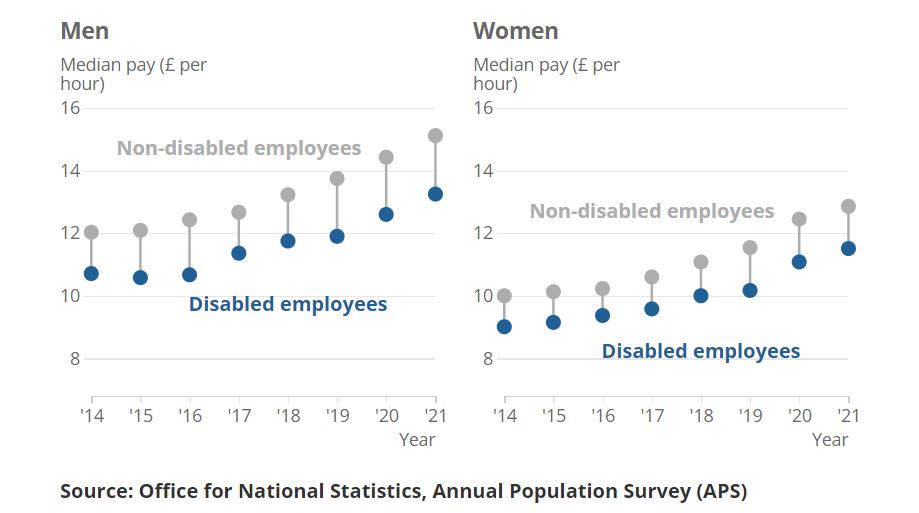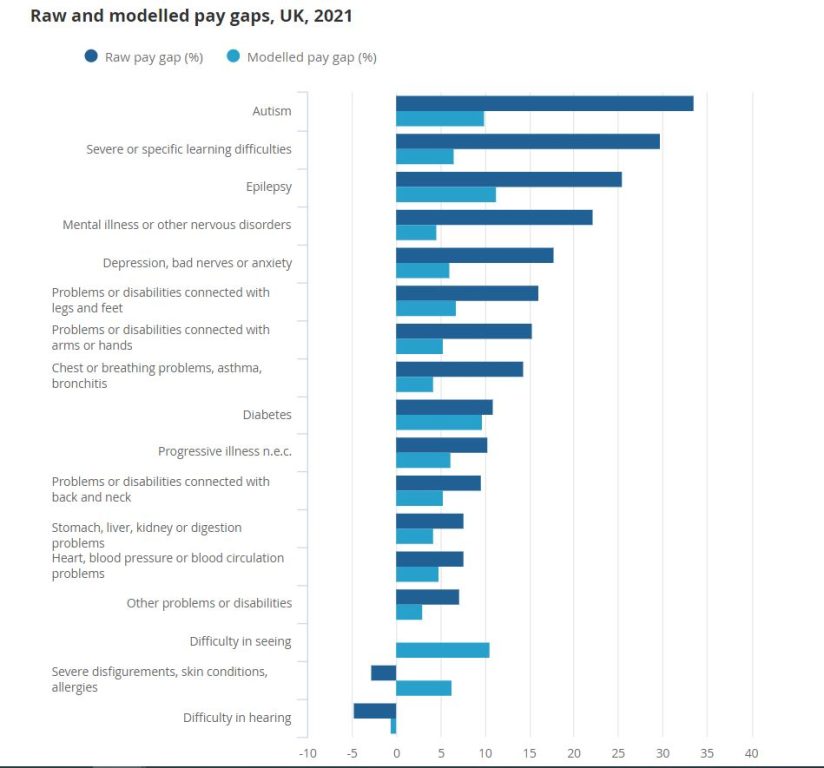Autistic workers have the largest disability pay gap
This is according to recent data from the UK’s Office of National Statistics.
Why You Should Care
Gender is not the only factor causing unequal pay.
Employees with disabilities are also paid less than their non-disabled colleagues.
Find out why this is bad for business.
The gender pay gap is the most discussed element of unequal pay.
But the UK’s Office for National Statistics (ONS) doesn’t just collect gender pay gap data, it also looks at other factors that affect equal pay. One of which is disability – and the ONS has published a new report on the disability pay gap.
Currently, the UK has a 13.8% disability pay gap – this is down from 14.1% in 2019, but up from 11.7% in 2014. This means that disabled employees get paid on average £12.10 per hour, compared to £14.03 for their non-disabled colleagues.
Interestingly, the gap is wider for disabled men than women. Disabled men are paid 12.4% less than their non-disabled male colleagues (£13.25 vs £15.12), while disabled women earn 10.5% less than non-disabled women (£11.41 vs £12.86).

The ONS’ raw data also found that autistic employee had the widest gap. They earnt 33.5% less than non-disabled employees without long-lasting conditions. The pay gap for those with learning difficulties was 29.7%; it was 25.4% for those with epilepsy and it was 22.1% for those with a mental illness, according to the ONS.

The Bureau of Labor Statistics in the US doesn’t collect the same kind of disability pay gap data. But the Census Bureau in the US does occasionally compile reports on this.
The latest data from 2019 found that full-time workers with a disability earn 87 cents for $1 earned by non-disabled employees. This declines to 66 cents to $1 for all workers.
The benefits of neurodiversity at work
Frankly, these statistics are shocking. Why should a disability affect how much people get paid or whether they are promoted? Hiring and promotion decisions should purely be about skills; bias must not come into the decision at all.
In addition, it is shortsighted of employers to overlook disabled workers, particularly those with autism and learning difficulties.
Research shows that neurodiverse employees bring new, fresh perspectives and ways of looking at problems, which is ultimately good for business.
Diversity at work – particularly around diversity of thought – is normally looked at through the lens of gender, race, and sexual orientation.
But it is high time that employers realize that all kinds of diversity – those mentioned above plus disability and neurodivergence – are a good thing for business bottom lines.
Sign up to the UNLEASH Newsletter
Get the Editor’s picks of the week delivered straight to your inbox!

Chief Reporter, UNLEASH
Allie is an award-winning business journalist and can be reached at alexandra@unleash.ai.
Contact Us
"*" indicates required fields
Partner with UNLEASH
"*" indicates required fields